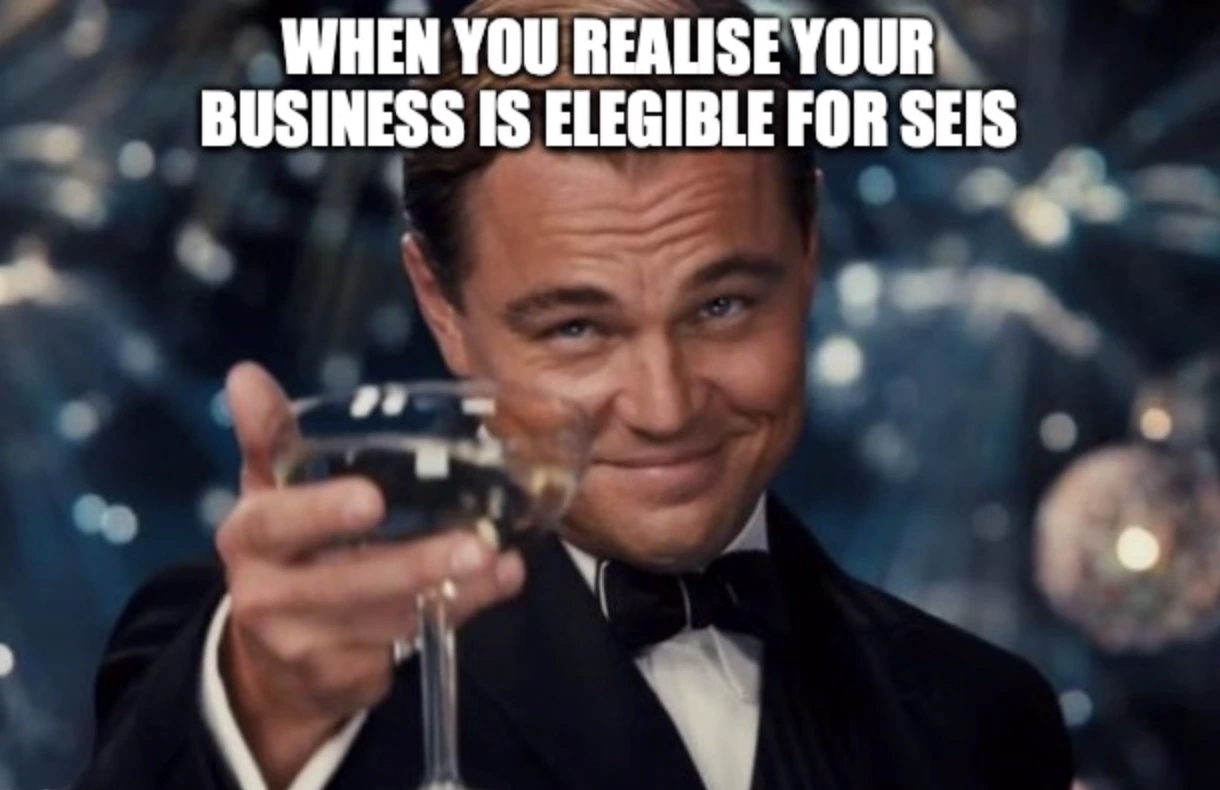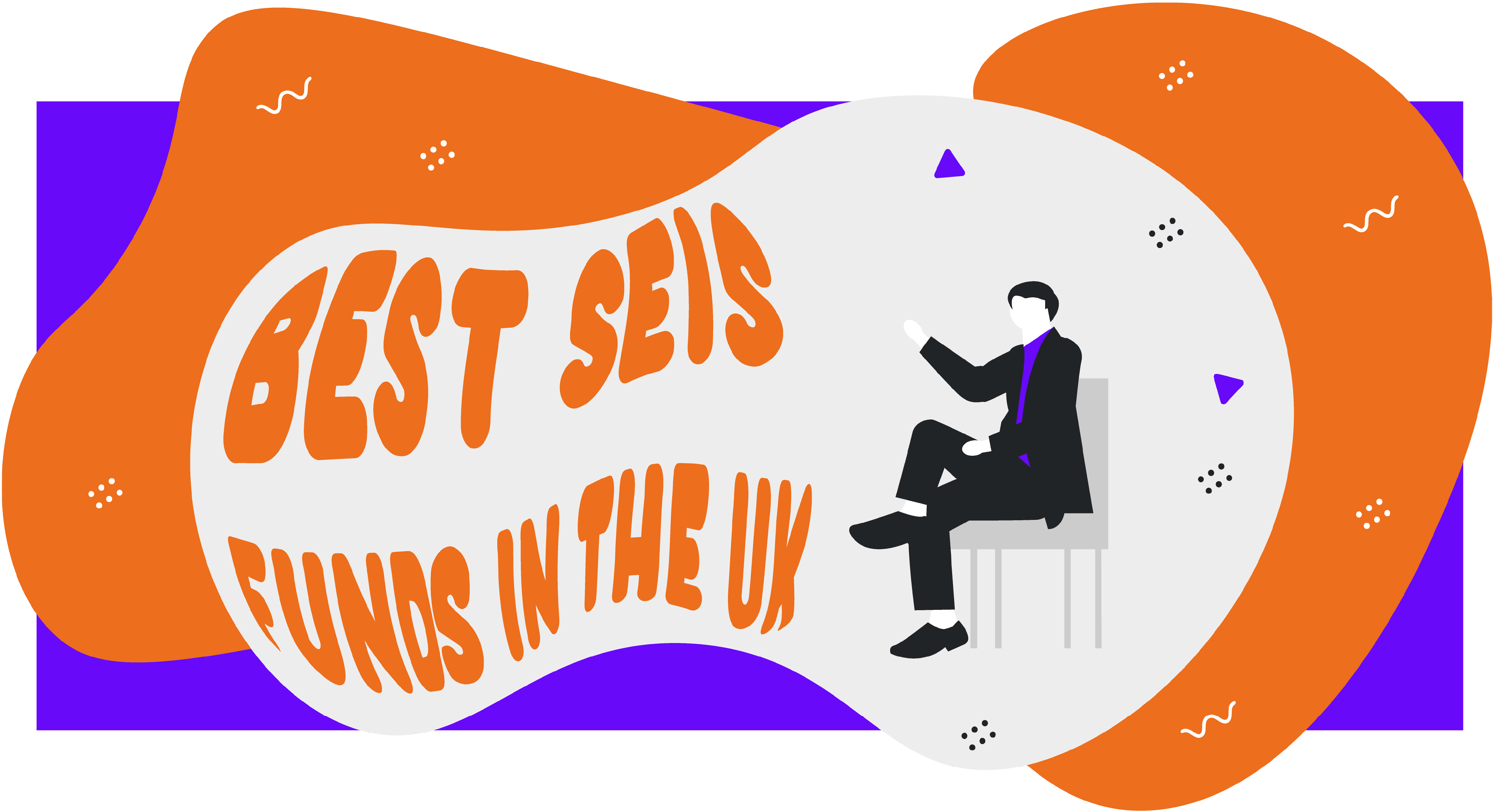What is the Seed Enterprise Investment Scheme (SEIS)?
SEIS is one of four capital schemes available for businesses
In this blog post, we outline the UK government’s Seed Enterprise Investment Scheme (SEIS), how it works and how to check if your business is eligible for it.

Table of contents
- Introduction: What is the Seed Enterprise Investment Scheme (SEIS)?
- Is my business eligible for SEIS?
- What are the benefits of SEIS for companies?
- What is Advance Assurance?
- What do I need to apply for Advance Assurance?
- What happens after I’ve applied for Advance Assurance
- How to submit a compliance statement
- What happens after you’ve submitted your compliance statement?
- What can I do with the money raised?
- Check if this is new qualifying trade
- Managing the risk for capital condition
- How do I issue shares?
- New rules from April 2023
- Information for investors
- Conclusion
The UK government introduced the Seed Enterprise Investment Scheme (SEIS) during the 2012-2013 tax year, but what is its meaning? SEIS is one of four capital schemes available for businesses and was launched following the success of the Enterprise Investment Scheme (EIS). It helps small businesses to grow as a company and raise funds while offering tax reliefs to investors who buy shares in your company. This helps to raise money when your business begins to trade.
Through SEIS funding, you can receive up to £150,000. This is set to increase to up to £250,000 in April 2023. This includes any other de minimis state aid received in the last three years. It will also count towards limits for later investments through other venture capital schemes.
However, you must follow the guidelines set for at least three years after an investment is made. If you fail to do this, you could have tax reliefs withdrawn from your investors. Therefore, you must adhere to the rules if you want investors to claim SEIS tax reliefs.
Is my business eligible for SEIS?
If you are considering submitting a SEIS application, you must first check to ensure your business qualifies. Your company will be able to use SEIS if any of the following apply:
- It was established and is based in the UK
- It has traded for a maximum of two years
- It has less than 25 full-time employees at the time of investment
- It has gross assets worth less than £200,000
- It carries out a new qualifying trade
- It is not trading on a recognised stock exchange at the time of the share issue
- It does not control another company unless they are a qualifying subsidiary
- It has no arrangements to become a quoted company or a subsidiary of another
- It has not been controlled by another company since your business was incorporated
- It is not a member of a partnership
- You cannot use SEIS if you have received investment from the Enterprise Investment Scheme (EIS) or a venture capital trust (VCT).

What are the benefits of SEIS for companies?
One of the most significant advantages of SEIS for a business is raising funds that would otherwise take a lot of work to achieve. If your company is eligible for SEIS, you can raise up to £150,000 in total. You are also not prevented from using the money to repay any third-party loans as long as they are not connected to the SEIS investor. The loan will also have to have been taken out “for the purposes of trade”. Overall, SEIS will allow you to grow and develop your business and present a risk of capital loss for an investor.
What is Advance Assurance?
HMRC (His Majesty’s Revenue & Customs) often grants Advance Assurance if they agree with you that an investment would meet the requirements of a venture capital scheme. In this context, Advance Assurance would be presented in a certificate, confirming the company's proposed share issue would qualify for SEIS tax relief.
However, this does not necessarily mean that the company will automatically qualify for SEIS tax relief - it will need to issue the shares before it can be confirmed. In addition, after a company has issued shares, it must submit a compliance statement to HMRC, regardless of whether it has applied for or received Advance Assurance. HMRC will then confirm if the company can issue SEIS certificates.
What do I need to apply for Advance Assurance?
In order to apply for Advance Assurance for SEIS, you will need to ensure you fulfil the criteria. You will need to provide the following:
- The date your company started trading
- The name, address and intended amount of investment from at least one potential investor. You only need to include this information if you haven’t previously received Venture Capital Scheme investment. The person you list does not have to be committed to invest, this is just required to prevent any misleading applications
- The details of any SEIS investments you may have taken out previously
- A three-year business plan with a financial forecast. Your financial forecast should be for three years from the date of your application and show you need the investment
- Pitch deck. This can be the same one you may have previously shown potential investors
- Latest company bank statements or accounts
- Current company Memorandum and Articles of Association
- Your response to the risk to capital condition
In 2019, HMRC introduced a SEIS Advance Assurance Checklist, which helps business owners ensure they have included the right information with their application. This checklist must be completed and submitted alongside the application form.
What happens after I’ve applied for Advance Assurance?
When your Advance Assurance application has been approved, you will have more opportunities to approach potential investors, knowing that their investment should qualify for SEIS tax relief.
One potential source of investment is a SEIS investment fund, specialising in investing in seed-stage companies and small startups. As a business owner, you have the ability to attend networking events for company founders and angel investors. However, once you have Advance Assurance, you should have more confidence that you can find an investor who is interested in your business. Friends and family can also use SEIS to help invest in you, but there are restrictions if they are investors.
How to submit a compliance statement
You must submit a compliance statement once you have issued shares to investors through SEIS. A compliance statement is a statement or report signed by a qualified party confirming that the defined business or facility has met specific requirements as stated by the owner.
You can submit a SEIS compliance statement form (SEIS1) if you are a company secretary, director or agent. If none of these applies to you, you could find an agent to submit for you, but they will need to provide a signed letter confirming they are entitled to act on your behalf. This must be dated within the last three months from the application date.
You can only submit a compliance statement application after you have carried out your qualifying business activity for at least four months or have spent 70 per cent of the amount raised by the share issue. If there are multiple share issues, you will need to complete separate statements for each of them.
If you have Advance Assurance, you must provide copies of documents that may have changed since HMRC gave you advance assurance. If you do not already have Advance Assurance, you will need to provide the following for your company and its subsidiaries when submitting a compliance statement:
- Business plan
- Financial forecasts
- A copy of the latest accounts
- A brief explanation of how you meet the risk to capital condition
- Information on trading and activities that will be carried out and how much you expect to spend on these
- An up-to-date version of the memorandum and articles of association
- Information memorandum or other documents that explain the fundraising proposal to investors
- Details of other agreements between your company and the shareholder
- A list of the venture capital schemes you have previously received investment from, including the exact amounts and the dates these were issued
If you have additional documents to show you meet the conditions, then make sure to include these with your application. You can submit a compliance statement on the UK government's website.
What happens after you've submitted your compliance statement?
Once your compliance statement has been submitted, HMRC will evaluate it to ensure it is accurate and that the scheme’s conditions have been met. If you have failed to meet their requirements, then HMRC will contact you, telling you why and how you can appeal the decision if necessary.
If HMRC agrees with your submission, then they will send you a letter of authorisation, a compliance certificate (SEIS3) and a unique reference number. These will all need to be given to your investors. In addition, investors will need to be aware of your unique reference number as they must use this and the certificate to claim tax relief.
What can I do with the money raised?
Any money raised by the new share issue through SEIS has to be spent within three years. You can spend the money on one of the following:
- A qualifying trade
- Preparing to carry out a qualifying trade
- Research and development that's expected to lead to a qualifying trade
As part of the scheme, you can only use the money raised to buy shares if they are in a qualifying 90 per cent subsidiary that operates the funds for a qualifying business activity.
Check if this is new qualifying trade
Suppose your business is already carrying out a qualifying trade through SEIS. In that case, it should not have been carried out for more than two years, either by your company or another person who transferred to it. Your business also should not have carried out another trade before you start a new one.
The trade in the scheme should be treated as a commercial business with the aim of making profits, but if it consists of an excluded activity, it will not qualify.
Meeting the risk to capital condition
Any investment in your business has to meet the risk to capital condition, meaning your company must intend to grow and develop its trade and use the investment to help achieve this. The investment should also pose a risk to the investors' capital. The growth and development of your business should not always rely on support from an investor. It is also down to you to make sure that your company will use the investments wisely.
One of the risks of the investment is investors losing more capital than they would be likely to gain as a net return. This is because the net return includes income from dividends, interest payments, capital growth and upfront tax relief. However, HMRC cannot declare the maximum return an investor could get if your business becomes successful, as this is only sometimes guaranteed.
HMRC will look at the following to determine if your business meets the risk to capital condition:
- Source of income
- Structure
- Assets
- Relationships with other companies
- Marketing of the investment opportunity
- Use of subcontractors
However, suppose there are risk-reducing arrangements in place that result in investors getting priority over others and being able to withdraw their money and protect. In that case, you will not meet the risk to capital condition.
New rules from April 2023
Starting with the new tax year in April 2023, the SEIS rules will change slightly. The number of years a company has been trading will increase from two to three. In addition, the amount of funding a business can receive will go up to £250,000, and the amount an investor can contribute will rise to £200,000.
Information for investors
What tax reliefs are SEIS investors entitled to?For investors looking to buy shares to companies under SEIS, they are entitled to the following four tax reliefs:
- Income tax relief: up to 50 per cent tax relief on investments up to £150,00 per tax year
- CGT disposal relief: any gain is free from Capital Gains Tax (CGT) as long as the investment will be held for at least three years
- Loss relief: if this needs to be claimed, you can select the loss of shares to be set against any income tax of that year or from the previous year
- CGT reinvestment relief: 50 per cent of capital gains are exempt from CGT if investors are reinvested in a SEIS-qualifying company
SEIS, like most other investments, carry financial risks for the investors that they should be aware of. The value and income of these investments can rise or fall at any time, so investors should be aware as they could get back less than they invest. Smaller businesses are less fully developed than larger, more corporate companies and are more likely to fail. If this were to happen, investors might lose their investment's total value.
Investors should be aware that SEIS investments are long-term, and you must be willing to agree to comply with them regularly over time. As a result, they are best suited for high-net-worth investors with no significant financial issues and can withstand a potential loss. SEIS investments are also less liquid than other stock market investments, making them harder to sell.
When can an investor claim income tax relief?When an investor has received a SEIS3 certificate from your company and the shares have been allotted, they can claim income tax relief via their tax return. This can still be claimed even if they had already filed their own taxes. Certificates are issued following the allotment after the SEIS company has received confirmation from HMRC that it has completed the requirements to satisfy.
SEIS income tax relief claims can be submitted for up to five years after 31 January and following the tax year in which shares were issued.
When are shares allotted?If an investor is investing through a portfolio, their SEIS portfolio manager will usually allot shares at regular intervals. They will often be told in advance when they could expect the next allotment to take place. Meanwhile, single company SEIS offers usually have a closing date. This can be when a fundraising target is met or on a specific date. Shares are allotted shortly after the offer closes, and the date shares are allotted will determine the investment date.
What is "carry back"?SEIS also offers a "carry back" option, which enables an investor to select some or all of their shares acquired in the same tax year to be treated as if they had been gained in the previous year. This allows them to offset the tax relief against the prior year's income tax. However, an investor can only do this if they have sufficient SEIS allowance in the tax year they want to carry back.
Which investors do not qualify for SEIS tax relief?It’s worth noting that certain family members cannot claim SEIS tax relief if they are closely involved with a company, as they would count as “associates''. “Associates” refers to parents, children, spouses and civil partners. However, siblings are not included in this. In addition, associates cannot qualify for SEIS tax relief if they are employed within a company and own more than 30 per cent of the shares. There is more information about this on the UK government’s website. Generally, any SEIS investor should not hold more than 30 per cent of the company’s overall shares.
Conclusion
We hope this has given you a better understanding of SEIS and how you can use the scheme to raise funds for your business. Remember that SEIS is not for everyone, so we advise you to only partake in the scheme if you know your business qualifies. Suppose your business is not eligible for SEIS. In that case, other options are available, including EIS and business loans and grants if you desire additional funding to help your company develop. We have written blog posts on all three of these options.
















